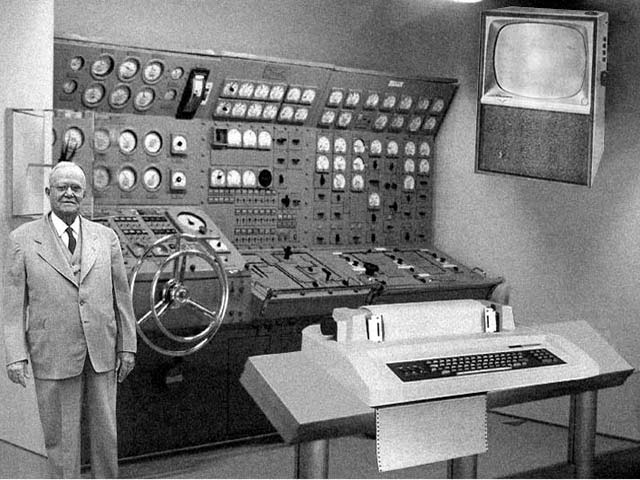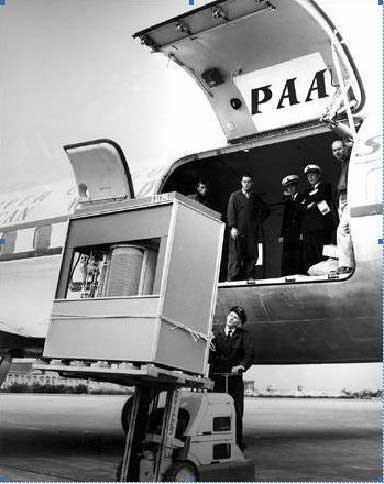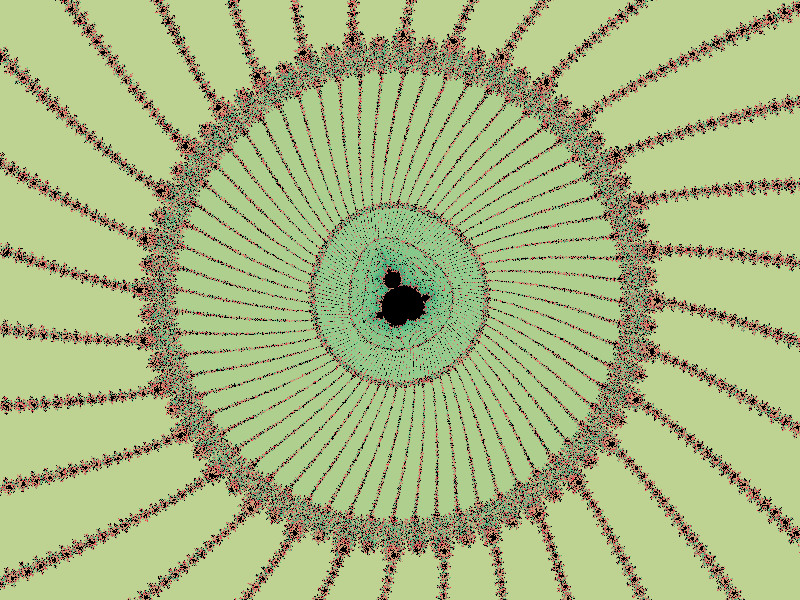Skip to comments.
Old computer stuff
None
| 8/17/2016
| Self
Posted on 08/17/2016 10:29:43 AM PDT by zeugma
I was poking around some old data today from some old backups, and I ran across something the old time computer folks will recognize and thought I'd share.
Many, many moons ago, before the internet was much more than a few government systems set up to 'talk' to each other, we still had PCs and stuff, believe it or not. Granted, compared to the system you can buy for a few hundred dollars today from just about anywhere on the internet, they weren't much, but they were what we had.
There were also things called "magazines" printed on thinly sliced dead trees. These covered just about any topic you could imagine, so of course, there were some dedicated to computers.
In some of these periodicals, you'd sometimes have little programs printed that you could, if you were careful and didn't make any mistakes, enter into an editor on your computer, save, compile and execute. Some were so tiny that if you were using a computer that used the DOS operating system, you could enter into a program called "debug", and almost immediately execute them. Debug was a really powerful and dangerous program, because it would give those who invoked it direct access to just about any scrap of memory or disk on your computer. Used injudiciously, you could easily trash your hard disk, or worse.
Because DOS didn't really have much intelligence to it, it was difficult to write interactive scripts. So, over time I put together a collection of tiny utilities to make my batch files smarter. One such program would read what key you entered, and output the scan code of the key as an error code. So, you could have your batch file prompt for input, then take different actions depending upon what the user entered.
here's the code for "key.com".
N KEY.COM
E 0100 B4 00 CD 16 EB 0E 77 06 3C 60 76 02
E 010C 24 DF 3C 00 75 02 88 E0 B4 4C CD 21
RCX
0018
W
Q
If you entered the above into a plain text file, and saved it as KEY.SCR, then enter the following from a DOS prompt:
DEBUG < KEY.SCR
you would end up with a program called KEY.COM that would interpret and echo keystrokes to help your batch files a little smarter than they otherwise would be.
The program, KEY.COM is tiny, weighing in at a whopping 24 bytes. However, it's diminutive size did not adversely affect it's utility. An even smaller pair of programs were something I called "WARM.COM" and "COLD.COM". They would reboot your PC immediately. 'Warm.com' was the equivalent of pressing the [ctrl]-[alt]-[delete] key, which would reboot without performing a full POST (Power On Self-Test). 'Cold.com', on the other hand, was like powering your computer off and back on.
If you were to run the following through DEBUG as shown above, you'd create both programs.
N WARM.COM
E 0100 B8 40 00 8E C0 26 C7 06
E 0108 72 00 34 12 EA 00 00 FF
E 0110 FF
RCX
0011
W
N COLD.COM
E 0100 B8 40 00 8E C0 26 C7 06
E 0108 72 00 00 00 EA 00 00 FF
E 0110 FF
RCX
0011
W
Q
It is easy to spot the difference between the two programs. The bottom line, was that the program told your computer to jump to a certain memory location. The different locations controlled the different boot types.
One final debug script I'd like to mention is 'BEEP.COM'. It wasn't the most powerful program in the world, as it had one simple job to do. It would make your computer speaker beep once. That's it. What is cool about it (to me any way) was that the entire executable was a whopping 6 bytes! To this day, I've never seen a smaller functional program. Here it is, in all it's awesome and tiny glory:
N BEEP.COM
E 0100 B8 07 0E CD 10 C3
RCX
0006
W
Q
The dates associated with the files indicates how long ago I was talking about...
-rw-r--r-- 1 zeugma zeugma 6 Jan 28 1994 BEEP.COM
-rw-r--r-- 1 zeugma zeugma 56 Mar 11 1995 BEEP.SCR
-rw-r--r-- 1 zeugma zeugma 17 Dec 22 1991 COLD.COM
-rw-r--r-- 1 zeugma zeugma 94 Feb 13 1996 COLD.SCR
-rw-r--r-- 1 zeugma zeugma 24 Dec 6 1992 KEY.COM
-rw-r--r-- 1 zeugma zeugma 17 Dec 22 1991 WARM.COM
-rw-r--r-- 1 zeugma zeugma 94 Feb 13 1996 WARM.SCR
TOPICS: Chit/Chat; Computers/Internet
KEYWORDS: computers; computing; debug
Navigation: use the links below to view more comments.
first previous 1-20 ... 101-120, 121-140, 141-160, 161-180 last
To: ctdonath2
http://flatrock.org.nz/topics/info_and_tech/computer_1950.htm
Scientists from the Rand Corporation have created this model to illustrate how a "home computer" could look in the year 2000. However, the needed technology will not be economically feasible for the average home. Also, scientists readily admit that the computer will require not-yet-invented technology though 50 years from now scientific progress is expected to solve these problems. With teletype interface and the Fortran language, the computer will be easy to use. 
161
posted on
08/18/2016 2:13:59 PM PDT
by
roadcat
To: ShadowAce
thanks dude. I can waste more hours of my life. :-)
162
posted on
08/18/2016 2:15:18 PM PDT
by
zeugma
(Welcome to the "interesting times" you were warned about.)
To: zeugma
However, I currently do have a lot more horsepower today than I did with my scrawny 386. See my post# 161. I think you have more horsepower than what these guys envisioned in the early 1950's for our time.
163
posted on
08/18/2016 2:16:42 PM PDT
by
roadcat
To: roadcat
Wow! They thought of doing a mouse with coaxial steering wheels! I guess.
164
posted on
08/18/2016 2:18:10 PM PDT
by
GingisK
To: roadcat
That pic is a hoax. Most of that came from a sub.
But it's still cool.
165
posted on
08/18/2016 2:21:39 PM PDT
by
ShadowAce
(Linux - The Ultimate Windows Service Pack)
To: GingisK
Back in the early 1960s I built an analog computer from a kit. It used several potentiometers and lots of dials to do calculations. A glorified slide rule. I suppose the pictured steering wheels served the same purpose.
166
posted on
08/18/2016 2:23:35 PM PDT
by
roadcat
To: ShadowAce
That pic is a hoax. Most of that came from a sub. Yeah, got me. Follow the link, it explains the hoax.
167
posted on
08/18/2016 2:24:59 PM PDT
by
roadcat
To: al baby
And by “fix” you mean...make it so the beads will never move again, right?
168
posted on
08/18/2016 2:53:25 PM PDT
by
Cletus.D.Yokel
(Catastrophic, Anthropogenic Climate Alterations: The acronym explains the science.)
To: roadcat
A 5-meg drive in 1956. The KJV bible is about 5 meg uncompressed.

169
posted on
08/18/2016 3:12:55 PM PDT
by
zeugma
(Welcome to the "interesting times" you were warned about.)
To: zeugma
in the FWIW department, in my basement in a box full of old PC stuff I still have a full height, 5 meg MFM HDD with the old interface card that drove it.
The box is sitting on top of the box holding my Ohio Scientific C1P.
170
posted on
08/18/2016 6:29:45 PM PDT
by
egfowler3
(What was it I was going to say here anyway?? Anyone care to remind me?)
To: egfowler3
I have two Televideo 25 CRTs in unopened boxes.
171
posted on
08/18/2016 6:36:02 PM PDT
by
GingisK
To: GingisK
Those are 925s. The original “9” was finger fiddled away.
172
posted on
08/18/2016 6:37:01 PM PDT
by
GingisK
To: zeugma
I use to work in the AF F-15 pilot training program. One of our graphic artists made 3d graphic of two F-15s crossing a ridge line. We would set it up to render on Friday afternoon and it would take all weekend. We can do the same thing at a higher resolution in less than 5 minutes now.
173
posted on
08/19/2016 5:44:02 AM PDT
by
mbynack
(Retired USAF SMSgt)
To: DiogenesLamp
Believe it or not, “Colossal Cave” has been ported to the Android system, and can be found at the Google App store. Looks like they have a version with fancy graphics, but I downloaded and have played the original text version, just as we knew and loved it back in the day.
Also found an Android version of “Leisure Suit Larry” with better graphics and audio than the original, but still the same old Larry!
Two of the great time wasters of all time, IMHO!
174
posted on
08/19/2016 8:48:42 AM PDT
by
ssaftler
(Proud member of the "ABC" coalition: Anybody But Clinton!)
To: zeugma
I love Fractint! I used it too when it was new.
I wrote my first fractal gnerator on a commodore 64 computer.
175
posted on
08/19/2016 8:49:29 AM PDT
by
Mr. K
(Trump will win NY state - choke on that HilLIARy)
To: zeugma
post the image you created with it!!
176
posted on
08/19/2016 8:50:02 AM PDT
by
Mr. K
(Trump will win NY state - choke on that HilLIARy)
To: sparklite2
:) I still manage OpenVMS for a defense contractor doing flight testing. OpenVMS on Itanium, rock solid. People don’t realize that most stock markets around the world still use VMS to process your stock transactions :) Been doing this the early 80’s....IVAXMAN :)
177
posted on
08/19/2016 8:57:59 AM PDT
by
IVAXMAN
To: ssaftler
Believe it or not, “Colossal Cave” has been ported to the Android system, and can be found at the Google App store. Looks like they have a version with fancy graphics, but I downloaded and have played the original text version, just as we knew and loved it back in the day.Also found an Android version of “Leisure Suit Larry” with better graphics and audio than the original, but still the same old Larry!
Two of the great time wasters of all time, IMHO!
I'm still old school on my cellphone, but if and when I ever upgrade, I would rather not own any product that profits Google or Apple.
As far as i'm concerned, trading with them is just a modern version of "The Rhinemann Exchange." They are evil and I don't want to support them if I can help it, though as time goes on, it becomes increasingly difficult to avoid their influence. They have their fingers in too many pies.
I'll bet somewhere on the internet I can find a copies that can be used on a regular PC.
178
posted on
08/19/2016 9:10:40 AM PDT
by
DiogenesLamp
("of parents owing allegiance to no other sovereignty.")
To: Mr. K
Your wish is my command
This is a random pretty one...

This one took 3.5 hours to render.

179
posted on
08/19/2016 9:51:55 AM PDT
by
zeugma
(Welcome to the "interesting times" you were warned about.)
To: zeugma
BTW, at the zoom factor of the bottom image, if the mandlebrot was the size of the universe, that picture would represent something much smaller than an atomic particle.
180
posted on
08/19/2016 9:53:30 AM PDT
by
zeugma
(Welcome to the "interesting times" you were warned about.)
Navigation: use the links below to view more comments.
first previous 1-20 ... 101-120, 121-140, 141-160, 161-180 last
Disclaimer:
Opinions posted on Free Republic are those of the individual
posters and do not necessarily represent the opinion of Free Republic or its
management. All materials posted herein are protected by copyright law and the
exemption for fair use of copyrighted works.
FreeRepublic.com is powered by software copyright 2000-2008 John Robinson



